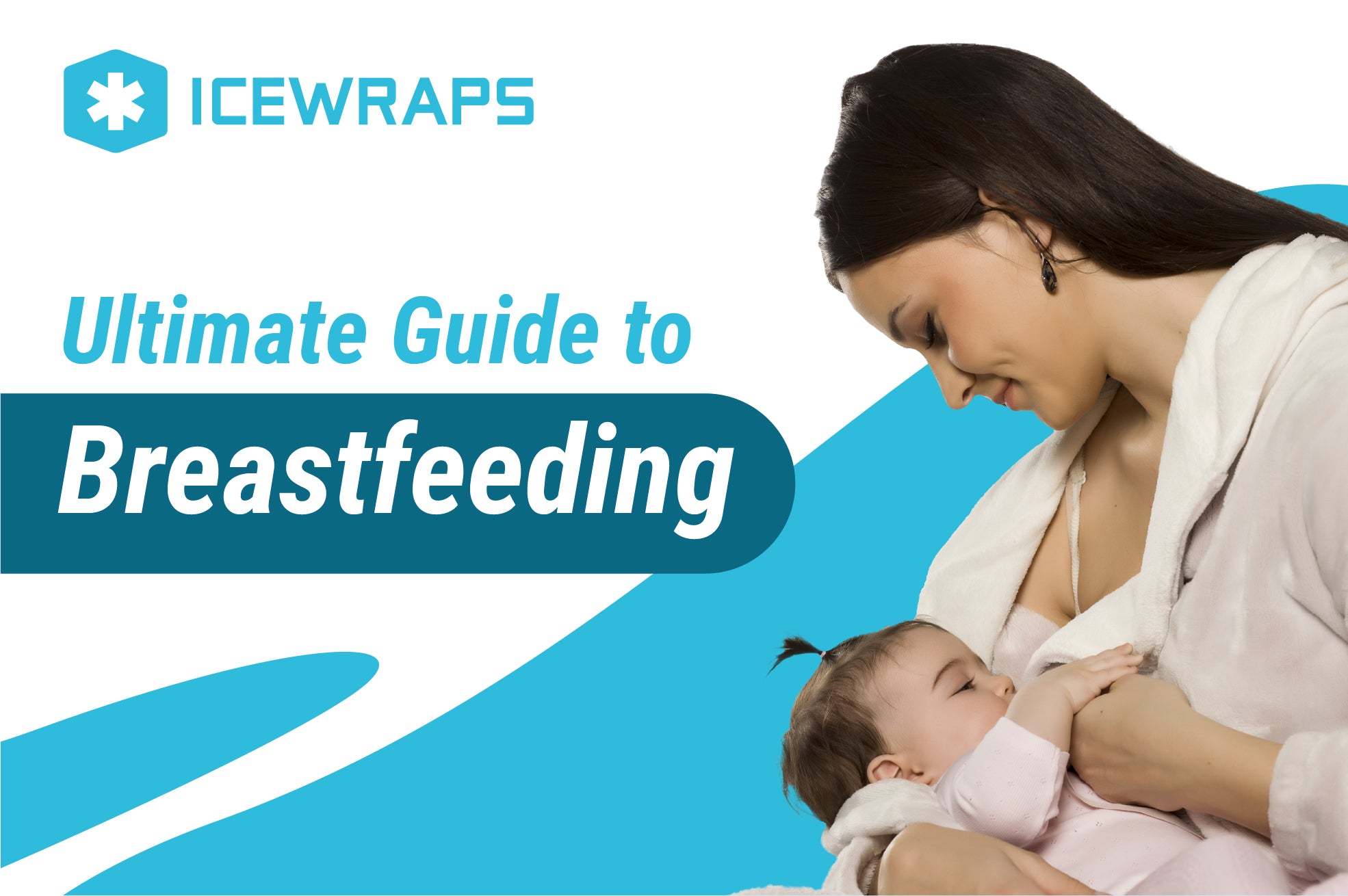Your Cart is Empty


Breastfeeding is different for every mom. All babies and moms are created different, so take time to make your breastfeeding journey your own.
Contrary to how it looks, breastfeeding does not feel as natural as people expect it to be. But with practice, it gets easier. With the right guidance, you and your little one will be able to reap the benefits of breastfeeding.
Congrats, momma! You're breastfeeding for the first time and we're sure you have some apprehensions. Don't worry, we'll get you prepped and ready to feed in no time.
While you’re at the hospital after your delivery, take advantage of the nurses and lactation consultants that are there to guide you through breastfeeding. They will walk you through the process and answer any questions you may have.
The first thing you need to do is to make a good latch. You will know when your baby has a good latch when:
✔️ It is painless
A good latch may be a little uncomfortable, but you shouldn’t be in pain.
✔️ Baby empties breast easily
You can feel your little one emptying your breast without issue.
✔️ No sore nipples
Pain or soreness is normal during the first minute of breastfeeding but should not continue for longer than that. If it’s painful, check the position of your baby.
✔️ Quiet
You shouldn’t hear clicking sounds during breastfeeding.
To ensure a good latch, Here are some positions you can try:
Cradle the baby’s head in the crook of your arm. If your baby is nursing on your right breast, use your right arm to support the baby’s head and you can use your other arm to support the rest of the baby’s body. Use pillows to lift your baby to nipple height.
Cross-cradle hold is almost the same as the cradle hold except you will be supporting your baby using the opposite hand of your nursing breast. If your baby is nursing on your right breast, use your left arm to support the baby’s head.
The football hold gets its name from the way a football is held. Tuck the baby under your arm like a football, using the same side that you’re nursing from. With your thumb and fingers supporting your baby’s neck, guide your baby to latch on your breast.
This position is most comfortable when you’re breastfeeding at home. Make your baby face you and guide the baby’s mouth to your nipple. Make sure that your little one is not straining to reach your nipple and you shouldn’t be bending down either.
Laid-back is the most common breastfeeding position. It's usually the first position you'll come to know while you're recovering in the hospital.When you leave your baby on your chest, your baby’s instinct is to search for food - towards your breast.
This position is especially helpful when you just had a C Section surgery, or if you've had twins and you need to breastfeed more than one baby.
Imagine your baby is the koala and you’re the branch. That’s how you do the koala hold. Hold your baby upright by supporting using your thighs or hip. Your baby needs to be a little older since they need to be able to support their trunk.
Dangle feeding can help relieve a clogged duct. It looks a little weird, because it requires you to dangle your nipple into your baby’s mouth by getting on all fours and crouching over your baby. Let gravity help you relieve clogged ducts and mastitis.
Dancer hand can be used if your baby needs some jaw support. You can do this by placing your hand under the baby’s chin, forming a U or C, and connecting the baby’s mouth to your breast.
Photo from Unsplash
Breastfeeding for the first time can feel daunting. It will take a while for you to get into the rhythm of your baby's feeding needs. It's easy to overthink if you're doing it right, and if your baby is getting enough milk. Here are some reminders to help you out during your first few feeding sessions:
Once you’ve gotten the hang of breastfeeding your baby, there are a few things you need to know in order to have a good feeding session (almost) every time.
When your baby is crying out of hunger, that means it’s too late. Your baby will usually display hunger cues once he/she is ready to feed. Some feeding cues to watch out for are:
How your baby feeds will be different from all other babies. Newborns will most likely feed every 1.5 hours to 3 hour, for about 8-12 times a day. As they get older, their frequency decreases into a more steady pattern.
There is no standard to how long and how much a baby should drink from you, but these are the signs that tell you your baby is getting enough nourishment.
Breastfeeding can sometimes come with complications. The best thing to do is to be aware of them and be ready when when they do occur. Some of the breastfeeding complications out there are:
Sore or cracked nipples
Thrush from the baby’s mouth can transfer to your breast and irritate your nipples, causing it to swell and be sore. If this happens, prescription ointments can help you out.
If you’re simply living in a drier climate and need extra moisture, moisturizing your nipples can do the trick. Most nipple creams out there contain the ingredient lanolin, which is great since it is hypoallergenic and safe for your baby. No need to wash off the cream before breastfeeding your baby.
Bad latch
There is no other workaround regarding a bad latch other than practice. Consult a lactation consultant if you don’t seem to be making any progress despite trying different positions.
Breast engorgement
When you make more milk than your baby consumes, this can lead to breast engorgement. When this happens, you can use a warm compress around your nipples in order to promote milk letdown. If it feels sore, you can also prepare a cold compress in order to relieve any inflammation.
 |
|
ICEWRAPS 4" ROUND REUSABLE HOT/COLD GEL PACK WITH CLOTH BACKING |
|
|
Lack of milk supply
If you feel like you’re not producing enough milk, offer both breasts to your baby in 1 feeding session. You can also feed your baby often and for as long as they want so your body can adjust to the volume of milk that is demanded.
Mastitis
Mastitis is when your breasts become painful, hot, and swollen. The cause of mastitis can be traced to blocked milk ducts or milk that wasn’t expressed during the feeding and is stuck in the breasts.
Once bacteria on the skin or the baby’s saliva enters the milk duct, it can cause an infection.
To relieve mastitis, it’s recommended to empty your breasts of milk often. You can breastfeed more often and make sure that your milk has been fully consumed. A warm compress on the breasts can also help with the pain and inflammation. You can gently massage breasts to relieve the feelings of fullness.
Breastfeeding has a lot of benefits for both you and the baby. It lowers your chances for cancers (breast, ovarian, etc.), and your breast milk also contains antibodies that strengthen your baby’s immune system. It saves time and money, and makes for a great bonding experience between you and your infant.
Let IceWraps support you during your breastfeeding journey. For any discomfort that needs a cold or warm compress, try out our products at IceWraps. Don't forget to take care of yourself as you take on this challenging role.
Comments will be approved before showing up.